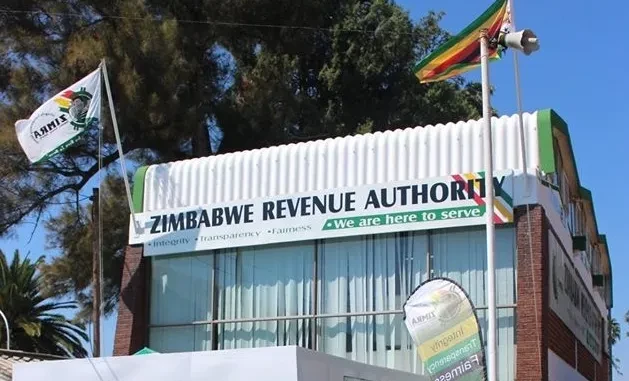
Zimbabwe’s tax-to-GDP ratio averaged 17,6% between 2010 and 2021, and slightly beats the Africa average of 16%.
However, a lot more is hidden within averages.
Numbers for revenue collections in the fourth quarter of 2022 by the Zimbabwe Revenue Authority (Zimra) are out and we look under the hood to understand the drivers of revenue and how this compares to other countries.
We observe that trends in Zimbabwe’s sources of revenue closely align with global trends. Personal income tax accounts for roughly 18% of total tax revenue, followed by VAT (c.22%) and corporate income tax (c.15%).
We note similarities with South Africa whose personal income tax, VAT, and corporate income tax account for 37%, 27% and 17%, respectively.
Upon aggregation, we observe that Zimbabwe’s tax revenues exhibit some notable differences in comparison to other countries’ aggregated data, as per OECD’s Global Revenue Database.
We note that Zimbabwe has
lower social insurance tax,
- Zim headed for a political dead heat in 2023
- Record breaker Mpofu revisits difficult upbringing
- Tendo Electronics eyes Africa after TelOne deal
- Record breaker Mpofu revisits difficult upbringing
Keep Reading
lower property tax,
lower consumptive tax,
a significant contribution by non-mainstream taxes in comparison to global aggregated numbers.
Social insurance tax is also known as social security tax and refers to compulsory payments paid to the government that confer entitlement to receive a future social benefit such as unemployment insurance, health insurance, and old-age insurance. Zimbabwe, in particular, has a limited social security system and this explains the very low contribution of such taxes in Zimbabwe.
Social security contributions in the country are managed by the National Social Security Authority (Nssa) whose contributions are payable at the same rate of 4,5% of individuals’ basic salary.
These contributions entitle the taxpayer to a monthly pension after retirement.
Elsewhere, the United Kingdom has the National Health Services (NHS), the United States has Medicare, and Germany has the social insurance system, just to name a few.
We assert that Zimbabwe’s lower property tax revenue stems from several factors that include
(i) a notable percentage of communal land versus land under freehold tenure,
(ii), citizens’ limited access to mortgage financing, and (iii) the infringement of property rights that deters international investor participation in the buying and selling of property in the country.
The change of ownership of communal land – which constitutes 42% of total land area in Zimbabwe - typically does not result in capital gains tax, if any, and this limits property taxes earned by the tax collector. In comparison,
South Africa’s communal land accounts for only 13% of the country’s land area.
Further, the average Zimbabwean cannot access mortgage financing because they cannot afford it and financial institutions sometimes cannot offer mortgages on the back of an unconducive operating environment.
Lastly, the expropriation of land without compensation in 2000 significantly undermined property rights and international investors have since detested investment into immovable property regardless of the US$3,5bn white farmers’ compensation package.
Zimbabwe’s consumptive taxes are also on the low side, and we opine that this a function of the level of informalisation in the country, local production activity, and porous borders. Zimbabwe’s local productive capacity is at the mercy of local economic policies and availability of energy, both of which have been volatile in the last couple of years.
The few players in the local economy favour distribution channels that are largely made up of informal players who are typically near-cash. The resultant gap in product supply is ostensibly served by documented imports whose value accounts for c.10% of total allocations on the FX interbank system.
However, we opine that undocumented consumer goods imports account for a larger portion of consumed goods in Zimbabwe, and these are mostly traded in the untaxed cash-only informal sector.
A striking difference in Zimbabwe’s tax revenue breakdown when compared to other countries is the contribution of the Intermediary MoneyTransfer Tax, or IMTT.
This 2% charge is applied on all transactions and, while this was initially meant to capture tax revenue from the informal sector, has been a pain in the neck for the formal sector as they remain the only players who largely transact using formal channels.
Several players have lamented the burdensome tax’s effect on the sustainability of their businesses.
While the IMTT has raked in considerable tax revenue for the local government, economic theory on tax suggests the tax could push more business players to informalise.
According to the Laffer Curve, the relationship between government tax revenues and taxes collected is bell-shaped and this means that, at some point in the curve, adding more taxes will encourage players to avoid, or even evade, taxes.
Data from several sources reveals that Zimbabwe’s tax revenue-to-GDP fell from 21,8% in 2018 to 18% and 15,4% in the subsequent years after the introduction of the IMTT in October 2018.
We also add that, since 2018, the average tax-to-GDP ratio has declined from 17,9% to 16,1%, and this suggests that the country’s taxes have exceeded the Laffer curve’s optimal level post the introduction of the IMTT.
Mtutu is a research analyst at Morgan & Co. — [email protected] or +263 774 795 854.







